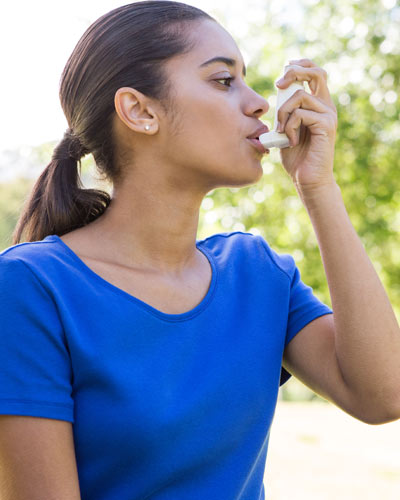For pump inhalers, you should sit up straight, head forward, and empty the lungs with
a big exhale. With the inhaler in your mouth, apply enough pressure for it to squirt
into your mouth. As the medicine squirts out, inhale at that moment to catch the flow
and bring it down into the lungs (instead of swallowing it). Breathe all the way in,
hold your breath for about 10 seconds, if possible, and blow out. This process is
typically repeated a second time after about a minute break.
If your inhaler doesn’t seem to be working for you, have your doctor or pharmacist
check that you’re using the device correctly. Online tutorials, such as YouTube videos,
can also be instructive, Parenti said.

 As potentially dormant allergies begin to surface along with spring flowers and other
blooms, those with asthma and chronic obstructive pulmonary disease (COPD)—including
chronic bronchitis and emphysema—may experience increased difficulty breathing.
As potentially dormant allergies begin to surface along with spring flowers and other
blooms, those with asthma and chronic obstructive pulmonary disease (COPD)—including
chronic bronchitis and emphysema—may experience increased difficulty breathing. Inhalers are primarily prescribed to alleviate symptoms related to asthma, which can
be triggered by allergies, viruses, or smoking or vaping. Symptoms can include cough,
wheezing and chest tightness. Asthma can develop early in life (shortly after birth)
and get better with age or persist throughout a lifetime, while other people may develop
symptoms later in life. In short: symptoms vary widely.
Inhalers are primarily prescribed to alleviate symptoms related to asthma, which can
be triggered by allergies, viruses, or smoking or vaping. Symptoms can include cough,
wheezing and chest tightness. Asthma can develop early in life (shortly after birth)
and get better with age or persist throughout a lifetime, while other people may develop
symptoms later in life. In short: symptoms vary widely.